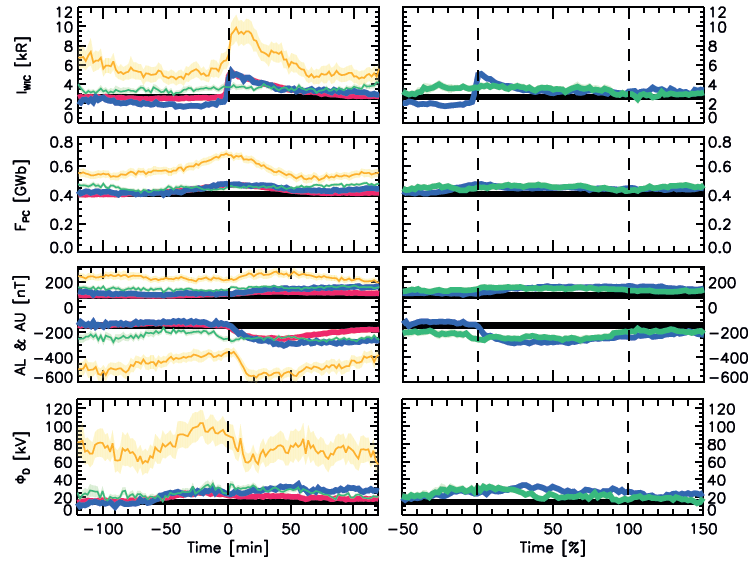MIST
Magnetosphere, Ionosphere and Solar-Terrestrial
Nugget: Are steady magnetospheric convection events prolonged substorms?
By Maria-Theresia Walach, Department of Physics and Astronomy, University of Leicester, Leicester, UK
The large scale convection of magnetic flux within the Earth’s magnetosphere due to reconnection, also known as the Dungey cycle [Dungey, 1961; 1963], is partially driven by the solar wind. During southward IMF reconnection at the subsolar magnetopause opens flux, which is then added to the magnetotail. Depending on the strength of solar wind-driving, the magnetospheric response can be delayed, episodic or prolonged, also known as “magnetospheric modes” [e.g. Pulkkinen et al., 2007].
Walach and Milan [2015] produced a statistical analysis of the event progression of steady magnetic convection events (intervals where the dayside reconnection is balanced by nightside reconnection [e.g. DeJong et al., 2008]), substorms (dominant dayside reconnection is followed by a delayed interval of dominant nightside reconnection [e.g. Baker et al., 1996]), and sawtooth events (signatures appearing to be quasi-periodic and quasi-global substorms [e.g. Henderson, 2004]). Superposed epoch analyses show that 58% of the studied steady magnetospheric convection events are part of prolonged substorms, where dayside reconnection is at first dominant. Then nightside reconnection is initiated as part of a substorm, but as the solar wind-driving continues the Earth’s magnetosphere then progresses into a state of steady magnetospheric convection, after which the substorm recovery continues.
Walach, M.-T., S. E. Milan (2015), J. Geophys. Res. Space Physics, 120, doi:10.1002/2014JA020631.

Superposed epoch analysis of substorms (red), sawtooth events (orange), steady magnetospheric convection events with preceding substorms (blue) and steady magnetospheric convection events without preceding substorms (green). The onset of the steady magnetospheric convection events with preceding substorms has been shifted to match the preceding substorm onset. The time of the event duration for the steady magnetospheric convection events in superposed epoch analyses in the right column has been normalised.